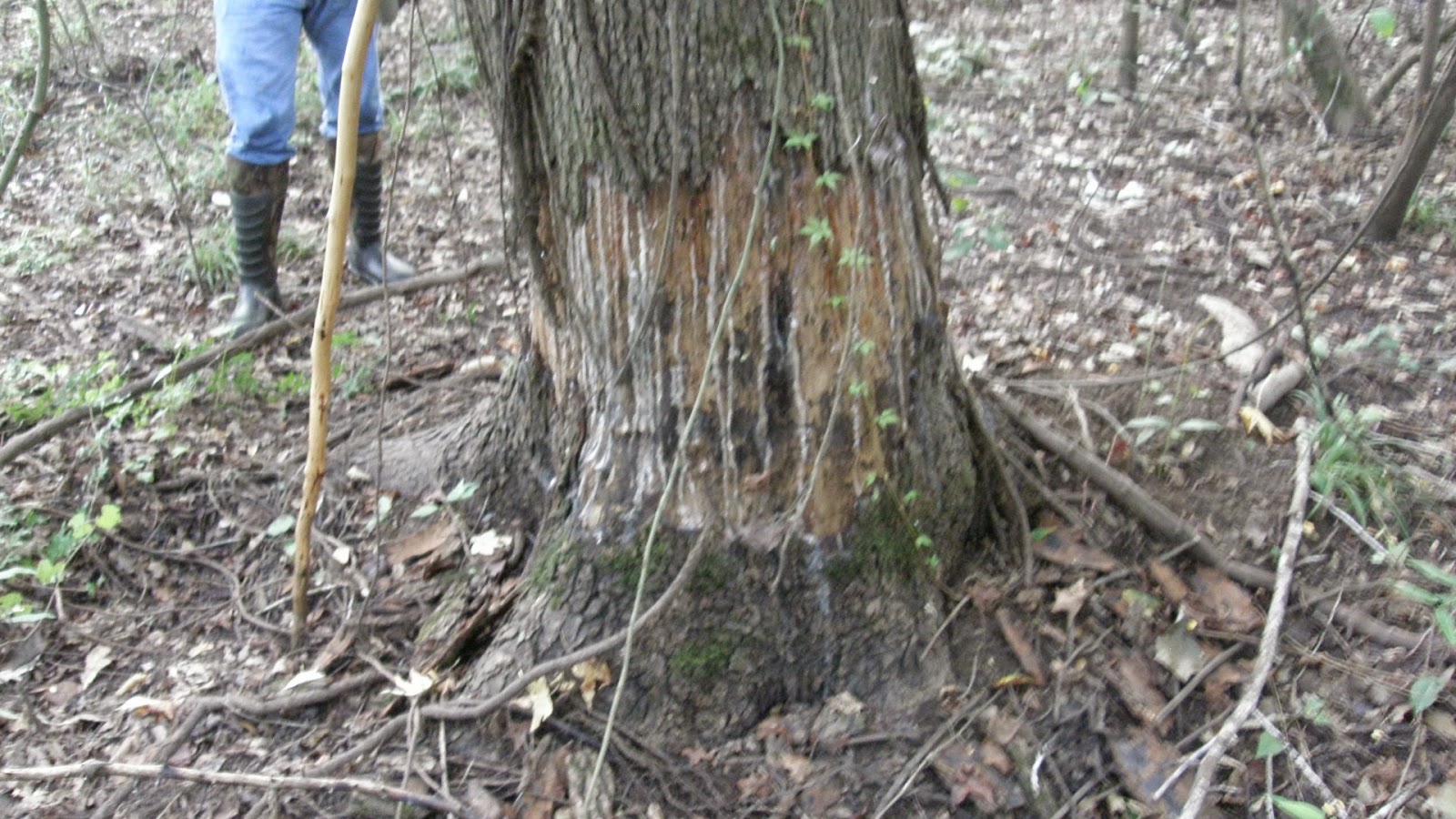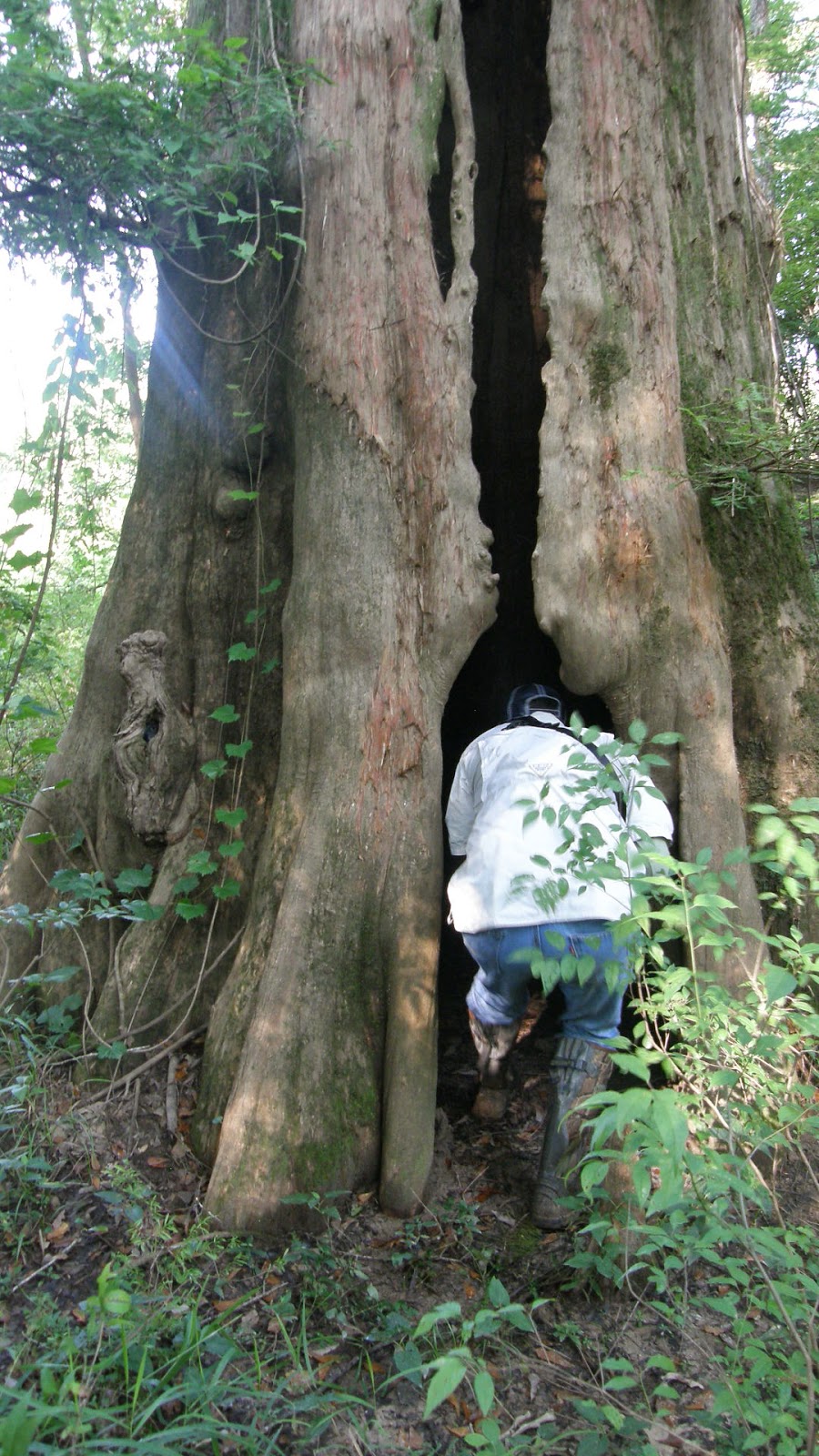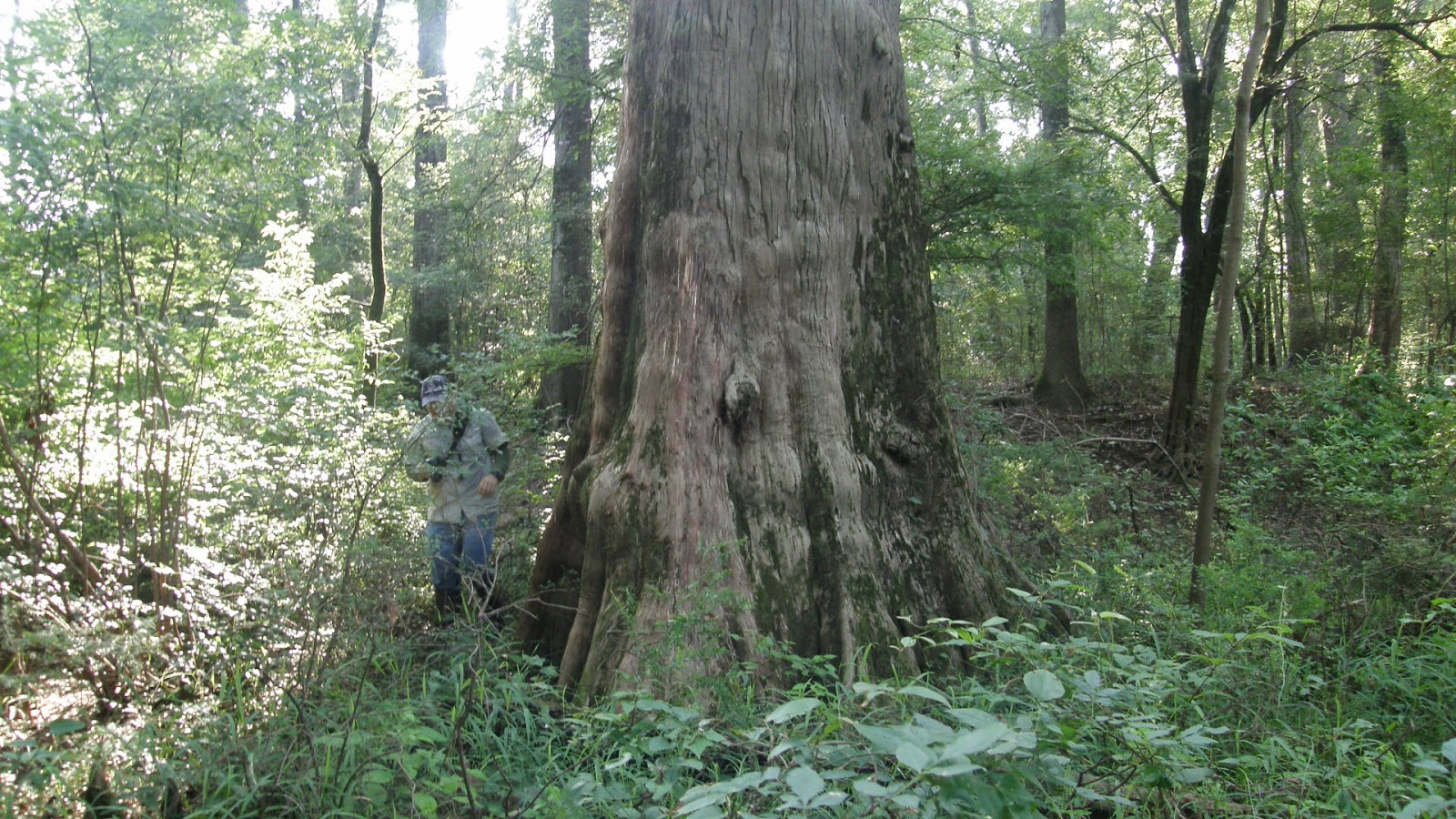IBWOH's: Brian W. Carlisle, Christopher Carlisle
Summary: A hike that, over six hours, circumnavigated Hutson Lake, an oxbow off the east bank of the Pascagoula River, in the Pascagoula Wildlife Management Area. The area is almost wholly forested, predominately by cypress and tupelo swamp forest, and stands of mature bottomland hardwoods. Here and there are relict cypress, and other remnants of the vast primeval Southern forest. Much of the area floods in the winter and spring months during the River's annual cycle. It was very hot and humid, which took a toll; I believe I may have suffered from heat exhaustion, forcing me to lay upon the ground several times to recover. The heat proved to be the greatest danger of the day; but wild hogs ran a close second. We encountered several, and heard more; and we may have been followed by one at one point, snorting at us from a hidden vantage in the thickets. Other wildlife was fairly abundant here, and I recorded three new bird species for the year: Kentucky warbler, tricolored heron, and an Anhinga. We saw no alligators, and only one snake, a black racer. It was probably too damned hot even for snakes. Other mammals we encountered were white-tailed deer, raccoons, and a rabbit.
We found what I believe to be old scaling upon several trees, as well as some very recent work on some others. The latter may have been due to either rubbing by wild hogs, or girdling by beavers, or even the work of black bear (I have heard convincing arguments for all three). I am not sure, but they are all strong possibilities and cannot easily be dismissed.
We started near the MS Highway 26 bridge, which crosses the Pascagoula east of Benndale. The area is criscrossed by old logging roads that are knee-deep or higher in grass and weeds this time of year, and are often blocked by large downed trees. We probably used those roads for over half of our hike. The roads were not always the easiest route to take in this area.
Banana spiders were everywhere. While nonpoisonous (though I have read that their bites are painful), these large arachnids are pretty wicked-looking and contribute greatly to one's sense of unease, especially when one gets a web full in the face. Often we had to duck under their webs, which span the old logging roads at eye level and higher. In South America, they are the largest non-tarantula spider.
Summary: A hike that, over six hours, circumnavigated Hutson Lake, an oxbow off the east bank of the Pascagoula River, in the Pascagoula Wildlife Management Area. The area is almost wholly forested, predominately by cypress and tupelo swamp forest, and stands of mature bottomland hardwoods. Here and there are relict cypress, and other remnants of the vast primeval Southern forest. Much of the area floods in the winter and spring months during the River's annual cycle. It was very hot and humid, which took a toll; I believe I may have suffered from heat exhaustion, forcing me to lay upon the ground several times to recover. The heat proved to be the greatest danger of the day; but wild hogs ran a close second. We encountered several, and heard more; and we may have been followed by one at one point, snorting at us from a hidden vantage in the thickets. Other wildlife was fairly abundant here, and I recorded three new bird species for the year: Kentucky warbler, tricolored heron, and an Anhinga. We saw no alligators, and only one snake, a black racer. It was probably too damned hot even for snakes. Other mammals we encountered were white-tailed deer, raccoons, and a rabbit.
We found what I believe to be old scaling upon several trees, as well as some very recent work on some others. The latter may have been due to either rubbing by wild hogs, or girdling by beavers, or even the work of black bear (I have heard convincing arguments for all three). I am not sure, but they are all strong possibilities and cannot easily be dismissed.
We started near the MS Highway 26 bridge, which crosses the Pascagoula east of Benndale. The area is criscrossed by old logging roads that are knee-deep or higher in grass and weeds this time of year, and are often blocked by large downed trees. We probably used those roads for over half of our hike. The roads were not always the easiest route to take in this area.
Male (left) and female banana spiders.
Banana spiders were everywhere. While nonpoisonous (though I have read that their bites are painful), these large arachnids are pretty wicked-looking and contribute greatly to one's sense of unease, especially when one gets a web full in the face. Often we had to duck under their webs, which span the old logging roads at eye level and higher. In South America, they are the largest non-tarantula spider.
Close to the trailhead, around 6 a.m.
Near the trailhead, I spotted a group of mature (though not large) trees within a grove that bore strange markings within 4-5' of their bases. At least three trees had had the bark peeled off in slabs. At least one of the trees, the one I got the most pictures of, was a sweet gum. One of the others I could not identify, though all are hardwoods. I decided to post all the photographs I took of them in that area, even though a couple are of poor quality. I wedged the blade of my knife between the sapwood and the cambium layer to show the tightness of the bark. All of the trees are still very much alive, despite their wounds. The grove was within a finger of woodland that bordered an old field, and was probably a hundred yards or more from water.
I became, admittedly, a bit giddy. (Photo: Brian Carlisle.)
"Skink Has a Bad Day." He is thoroughly encased in sap.
I wedged the blade of my knife between the bark and the sapwood. It was very tight.
The upper bole of the sweet gum.
Tree 2. I could not identify the species. Here the bark is not completely peeled all the way around, only mostly so.
Upper bole of Tree 2.
Tree 3. Here the vines and other plants grow up against the tree, near the bark peeling. I believe the lack of disturbance to the vines may preclude the bark being peeled off by a feral hog, which would surely have left the vines in disarray.
Tree 4.
Tree 5.
We continued on, past an old field and a number of wooded sloughs afterward.
Interestingly, this forest counts among its members not a few very tall live oaks. This natural cavity was in one of them.
Old scaling on a sweet gum.
Scaling at the base of a spruce pine, near a slough. I believe that this could be the work of feral pigs.
Peeling on yet another live tree, species unknown to me.
Swamp chestnut oak, a very common species in the area.
Hog Wuz Here. No, really. A wild hog was watching us from this opening, and darted off before I could get a photo.
Old cavity in a dead pine. The most common pines here were spruce pines; longleaf and other upland pine species are uncommon.
Girdling. Beaver-work.
A nice red oak, only a little above average size for the many varieties of oak here.
Here we leave the trail for a real woods-walk, making for the River.
Healed scaling on a sweet gum.
Damage to another spruce pine.
I think this was likely done by a beaver.
Yeah. Not a woodpecker.
Red-headed woodpeckers were common here, and we heard pileateds, red-bellieds, and downies as well. They seem to like this snag.
Coming out of the woods near the southwestern end of Hutson Lake, we encountered Old Man Cypress, holding timeless court among his underlings.
Yep. Hollow, all the way down...
... and up.
Of course, we could not resist. Can you blame us?
The Old Man measures over 22 feet in circumference, making him over seven feet wide.
I conservatively estimate his age to be over 350 years.
A nearby snag showed some old scaling.
Brian attempts to photograph an anhinga, which is perched atop a cypress across the lake.
Here I must pause, and will shortly resume and complete this report.

































































No comments:
Post a Comment